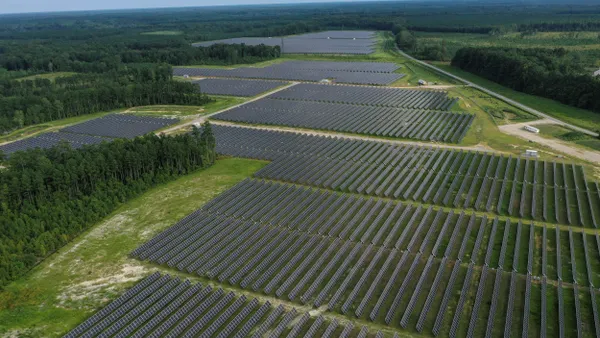Dive Brief:
- Vivint Solar, the second biggest U.S. rooftop solar installer, has shuttered the operations it began in July in Nevada, leaving behind the facility it leased and the 30-plus person staff it had hired. Its change in plans was provoked by the controversy over the state’s cap on net energy metering (NEM).
- The 235 MW cap was supposed to carry the rooftop solar industry through early 2016. It was set by the state lawmakers’ action in May to resolve solar industry-NV Energy conflict about a cost shift caused by NEM. It was intended to sustain installers until the Nevada Public Utilities Commission set new solar policy.
- Assuming the opportunity would last, Vivint began operations. NV Energy then announced it had miscalculated and the cap would be reached by the end of August. Nevada solar installations have essentially stopped.
Dive Insight:
Nevada’s installed solar capacity applicable to the NEM cap was 234.2 MW as of August 20, 2015, according to the NV Energy website.
State regulators rejected the Alliance for Solar Choice's July petition to extend the NEM program because, with the legislative passage of SB 374 to set the cap, lawmakers took program authority.
NV Energy filed with the PUC proposing new rules and rates for NEM customers to be enacted by September 15, 2015. It calls for two separate rates, one standard and the other an optional time-of-use rate. Both include a basic service charge, a demand charge, and an energy charge.
"A three-part rate design better reflects the unique costs of serving our net metering customers and eliminates the unreasonable shifting of costs between those that can access rooftop solar and net metering and those that don’t," Kevin Geraghty, NV Energy vice president of energy supply, said of the proposal.
However, a report prepared last year for the Nevada PUC by Energy + Environmental Economics did not find a cost shift was occurring. NV Energy disputed the findings of the study, saying it did not take certain "key factors" into account.
"Overall, we do not estimate a substantial cost shift to non-participants due to NEM going forward," according to the report. "We estimate a total [net present value] benefit of 2004-2016 NEM systems to non-participating ratepayers of $36 million during the systems’ lifetimes."














